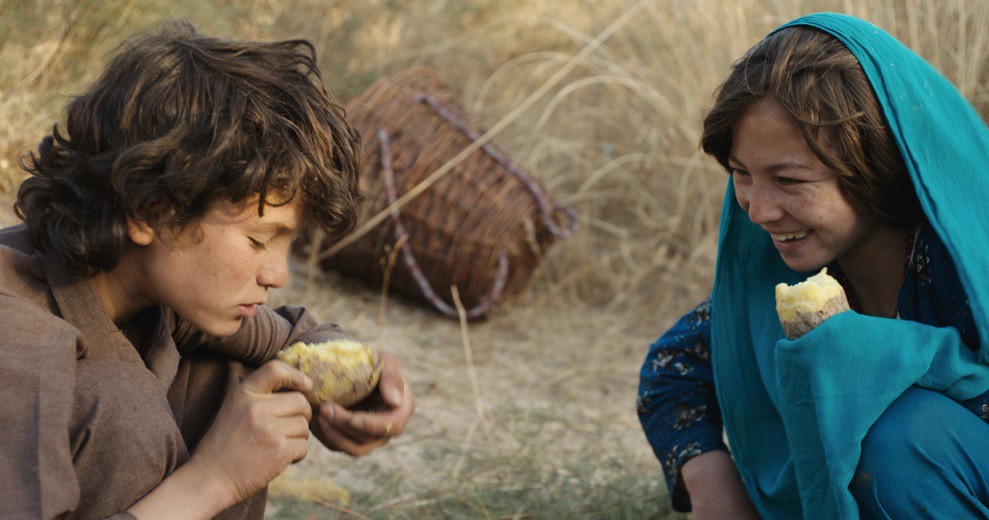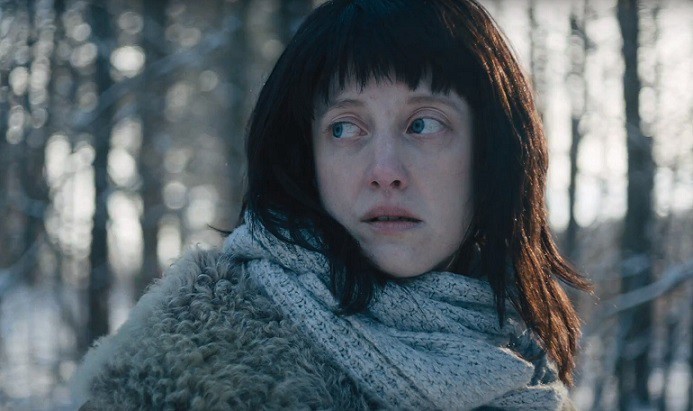Shahrbanoo Sadat is an Afghan screenwriter and director. Sadat’s first short fiction film, “Vice Versa One,” was selected at Directors’ Fortnight at Cannes in 2011. In 2013, she launched her production company, Wolf Pictures, in Kabul. “Wolf and Sheep” was developed with the Cannes Cinéfondation Residency in 2010. Sadat was 20 years old at the time — the youngest ever participant to be selected.
“Wolf and Sheep” will premiere at the 2016 BFI London Film Festival on October 9. The film will be released on VOD platforms October 10.
W&H: Describe the film for us in your own words.
SS: “Wolf and Sheep” centers on a community in a very small and isolated village somewhere in rural central Afghanistan. I lived there for seven years, from when I was 11 to 18.
It’s about a group of kids who take care of sheep and goats every day, taking them up to the mountains to graze. They have their own world there, far away from adults. The story about shepherd children follows an outsider girl. She takes us up and down to the mountains and village to the worlds of both children and grownups.
W&H: What drew you to this story?
SS: Well, I grew up in a very small and isolated village in central Afghanistan. I was an outsider and couldn’t really communicate with people. I had no friends. I had weak eyesight and I couldn’t wear my glasses for fear that they would make me even more of an outsider — people in the community believed that glasses were only for blind people.
Being an outsider gave me the chance to observe the community with some distance. I learned the rules people made for themselves. I was completely disconnected to the world; the closest town was quite far away. I was stuck among all the high mountains around me in the valley.
Those years taught me how things work in the Afghan community.
W&H: What do you want people to think about when they are leaving the theater?
SS: The film has a very observational point of view which gives freedom to my audience to think.
I’m so sick of the way the media portrays Afghanistan — it’s all about scary and bad things happening there. At the same time, I’m so sick of very optimistic points of view that show good and bright sides of Afghanistan that only an idiot can believe.
I get so angry whenever I watch a film about Afghanistan because I think someone is insulting my [intelligence]. There is no depth and not enough knowledge about Afghanistan.
I used a cinema vérité approach. I want people to look at my version of Afghanistan through everyday life — very simple and universal stories.
W&H: What was the biggest challenge in making the film?
SS: The biggest challenge for me was that I couldn’t shoot my film in Afghanistan.
As I mentioned before, my background is in cinema vérité, and you can imagine how difficult it was for me to try to recreate everything, as we couldn’t shoot the film in Afghanistan. I wanted the real village, real people, real costumes, real props, and everything real, but it was not easy.
We were so hoping that things would get better after the election in Afghanistan, but things got even worse. We postponed the film a year. I struggled so much to shoot the film there. Many have left the country since 2014, when international forces started to leave the country. People lost hope; suddenly I had no single friend left in Kabul, where I lived. I felt so alone, and [I felt] that doing a film wasn’t important for anyone. I felt stuck with all these concerns about politics and security, which I hated to be involved with.
We finally decided to shoot the film in Tajikistan, which I thought would be the closest place to the location. At the preproduction time, the Taliban took over the north of Afghanistan and Tajikistan, which borders the north of Afghanistan. They closed their border and stopped the only flight coming from Kabul to Dushanbe. Their embassy stopped issuing visas for Afghans.
Afghans were officially on the blacklist in Tajikistan. During that time, I went to the embassy of Tajikistan in Kabul saying I want to bring 38 Afghans to Tajikistan for a film! The consul looked at me and didn’t even reply. He thought I was out of my mind. After months of running and doing paperwork — and waiting in endless queues in front of the embassy — we received visas for my actors. It was supposed to be a very simple film, but everything was a true hell.
W&H: How did you get your film funded? Share some insights into how you got the film made.
SS: My producer Katja [Adomeit]. She is German and has lived in Denmark for many years. She [is the founder and CEO of] Adomeit Film, which is a Danish registered company. We received funding from New Danish Screen, Danish Film Institute, Eurimages, Cinereach, Cinémas du Monde, and Visions Sud Est. We also did a crowdfunding campaign, where 417 people helped us to collect $100,000 in a month.
W&H: What’s the best and worst advice you’ve received?
SS: Honestly, I don’t like advice that much. It always confuses me. I think I know what’s best for the film better than anyone else does.
W&H: What advice do you have for other female directors?
SS: Again, I don’t like advice. What I learned from “Wolf and Sheep” is that I should never give up on the things I’ve always wished to do. There is always a way — always — and you just need to concentrate and find it.
W&H: Name your favorite woman-directed film and why.
SS: I like “The Piano” by Jane Campion, but at the same time, I ask myself, “Seriously? Only one woman director has received the Palme d’Or at Cannes?”
Women have such a beautiful world to share. They have such a strong point of view. But there is no trust and respect for women’s work where I live — and I think it’s something universal for all the woman all around the world: It doesn’t matter if you are a filmmaker or if you are a housekeeper.
I think women should never give up and [they should] make films one after another no matter how hard and how difficult it is. [It’s hard to name a female filmmaker who makes films continuously.] They should always stand next to male filmmakers and give a voice first to themselves and then to other women.
W&H: What are the filmmaking opportunities for women in your country? Have you seen recent improvements? What do you think needs to be done see some change?
SS: I must say there is no funding or support system for making films in Afghanistan. Most Afghan filmmakers left the country because they lost hope and they didn’t see any future.
Afghan cinema [is like the mafia.] We have many festivals with a high budget screening films produced 10 years ago or even more. It’s like 20 people giving awards back and forth to each other.
There are some amateur filmmakers making short films and sending them to festivals all around the world, but a vision is missing there — films are a copy of other films from Hollywood, Bollywood, or even Iran.
Sometimes cultural departments of embassies organize a workshop for filmmaking. In my opinion, that is just throwing the money out of window. A workshop should be a follow-up process, not only a week of work and then everything is finished and there is no help after.
I think Afghan filmmakers should be connected to international funds for developing countries. They can compete with other talent around the world and receive money for making their films. I think we need a long-term workshop or a program for training producers — Afghan producers who can take care of a project, both financially and creatively.







